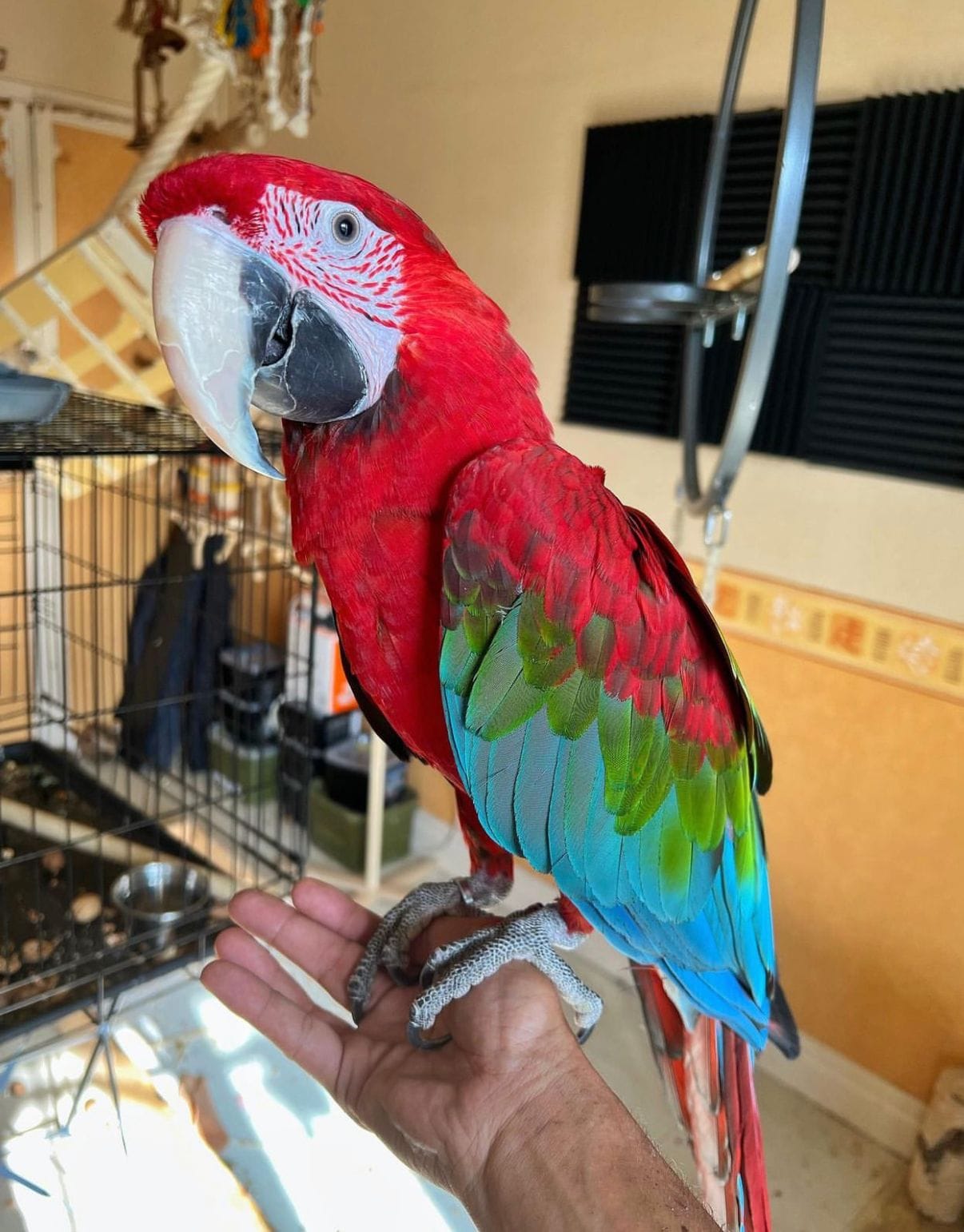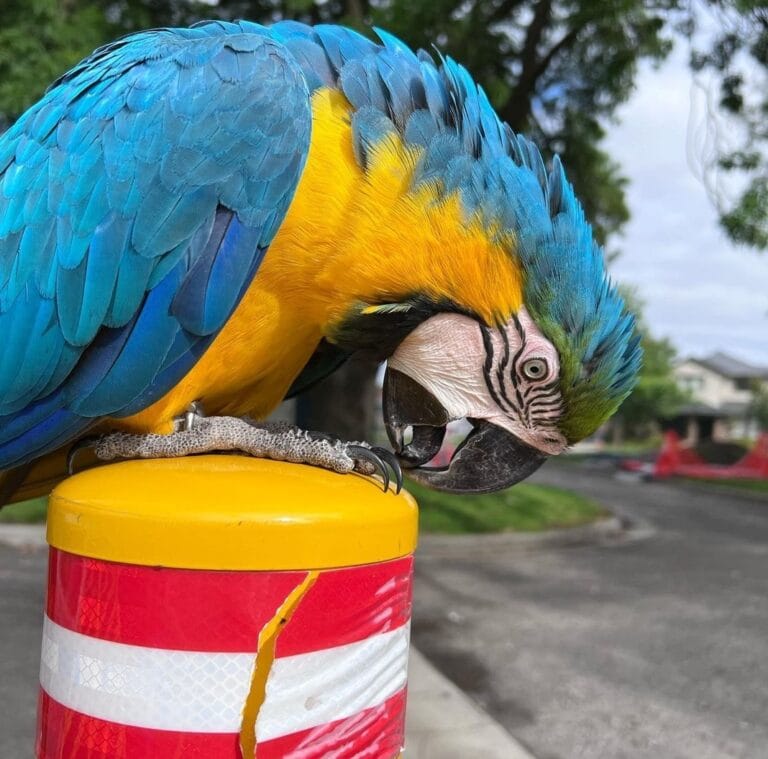10 Quick Tips About Melody Blue Spix Macaw
페이지 정보
작성자 Zora Dupuis 댓글 0건 조회 3회 작성일 25-02-20 22:04본문
 Melody Blue Spix Macaw
Melody Blue Spix Macaw After a long time with uncertainty and fear Brazilians and German conservationists were able to successfully reintroduce a grouping of couples back to their natural habitat. Their story is inspiring, but also rife with resentment and jealousy.
After a long time with uncertainty and fear Brazilians and German conservationists were able to successfully reintroduce a grouping of couples back to their natural habitat. Their story is inspiring, but also rife with resentment and jealousy.The first challenge was finding enough birds for the exchange. The macaws were monogamous, therefore it was crucial to ensure that the pairs were well-matched.
Range
A South African couple is working to save the critically endangered Spix's Macaw, which was declared extinct in 2000, following years of poaching and habitat loss. They have a small number of the birds kept in captive, and they hope to release them into the wild close to Curaca. They call them their little blue friends and compared their journey to the story of Presley, the last known Spix's macaw to buy in the wild. They describe Presley as a true survivor, who lost his family but was loyal to his home. They feel a strong kinship to him and see their lives as identical to his.
The discovery of the last Spix's miniature macaw for sale offered researchers with an opportunity to study its behavior in the wild and gain a better understanding of why this species was able to survive for this long. It also helped them make a more precise estimate of the historic numbers of this unique bird. Researchers were able to gather crucial details about the bird's daily movement, its seasonal adaptation to drought, and its eating habits. They also observed attempts to reproduce using an Illiger's and Spix's hybrid macaw pair which was a crucial step in the rehabilitation of this species.
It was an amazing feat that this bird managed to endure and thrive in the wild despite a limited gene pool, and it has also helped researchers understand how these birds could be reintroduced back to the wild. The survival of the bird that was killed inspired people to take action in order to save other parrots and threatened species. This has also encouraged zoos to create their own captive breeding programs for these exotic bird species.
This group of experts is a model for how conservation groups and other organizations where can i buy a macaw collaborate to protect endangered species of wildlife and animals. This group consists of Brazilian government officials, representatives from zoos, international owners of the Spix's macaw, and ornithologists to achieve one goal in common to save this endangered bird.
The working group has already completed a great deal of work. This includes developing plans to reintroduce the bird back to the wild. The group has also been working to raise funds to support field research, community outreach and captive-breeding birds for the reintroduction plan. The group has also established an ongoing committee to help recover the hyacinth bird price.
Habitat
At risk due to habitat destruction and poaching The Spix's macaw (Cyanopsitta spixii) was thought to be extinct in the wild ten years ago. Aviculturists, ornithologists and other experts continue to do their best to save this iconic bird from the brink extinction.
A cult animated film and two sequels have made Spix's macaw recognizable to millions of people worldwide however this is only the beginning in the long-distance journey to bring these birds back from the brink. For a long time, a global team has been working to breed and bring back Spix's macaws raised in a captive environment back into the wild.
The Spix's macaw is endemic to a tiny area of northeast Brazil known as the Caatinga which is an arid region of savannah scrubland that is flat, interspersed with creeks that flow through the seasons and gallery forests. The first time it was described was in 1819, and is one of the least-known Neotropical parrots, despite only sporadic sightings from the wild, Macaw To Buy a few captive birds and some museum specimens.
To protect the declining population, an international group was formed. It brought together aviculturists who held the last remaining bird, as well as government officials. The group formed a partnership with the world-renowned non-profit organization Al Wabra Wildlife Preservation of Qatar to establish a program to reintroduce Spix's Macaws back to their natural environment.
AWWP has acquired and is recovering 2,380 hectares of Caatinga close to Curaca (Brazil) of the most pristine habitat. AWWP also breeds and rears birds that will be released in the wild. This will provide an animal that is genetically pure for the future generations.
In the wild, Spix's macaws reside in trees, and are not often seen on the ground. They usually nest in tree holes or Macaw To Buy hollows and forage for fruit seeds, nuts, seeds and other plants. They will typically spend up to three-quarters of the time in the nest.
A local community was selected as part of the field team to assist identify Spix's Macaws. The community was provided with watches that would activate if a Spix's Macaw is identified. This allowed them to track the birds in the wild and their daily activities. This method has proven to be extremely successful.
Diet
The Spix's Macaw (Cyanopsitta spixii) is the only species found in the family Cyanopsitta. It was declared extinct in the wild in the year 2019 by the International Union for the Conservation of Nature after the last wild parrot to be identified disappeared in 2000, and subsequent surveys failed to locate any additional birds. A reintroduction plan is in progress to try to bring back this critically endangered bird back to its home in the Caatinga.
The northeast region of Brazil is home to about 10% of the country. Spix's Macaws were amidst the hollows of old caraibeiras, and were also known to eat nuts and seeds.
A reintroduction program is now underway to re-establish a wild population of the Spix's Macaw. Eight Spix's Macaws that were raised in captivity were released in the wild in June. Twelve more birds are expected to be released by 2022. They will be joined in the area by a group of Blue-winged macaws that have been reintroduced and will share information on food sources, nesting and roosting locations.
The reintroduction programme has already collected valuable biological data about the behavior of this bird, which includes details of the patterns of movement and adaptations to drought. It also provides an insight into the nature of the Spix's macaw pet, helping to discover the reasons behind its disappearance in the wild.
Spix's Macaws consume the seeds, fruits, and nuts of many plants that are native to the Caatinga Biome. This includes the pinhao-bravo (Jatropha mollissima) and the linhas brasil (Senegalia tenuifolia) as well as the Joazeiro (Ziziphus Joazeiro) and facheiro cactus (Pilosocereus pachycladus). The acai palm (Acaia olive) and mofumbo (Combretum léprosum) fruits are also edible.
Spix's Macaws like all parrots and other bird species are social birds that form close bonds with their parents. They are very vocal and often imitate human speech and other sounds. They make a mating call called the "whichaka," which is described as a brief, repetitive grating sound similar to a flute note. They are well-known for flying high and fast when they are in an ecstatic mood.
Breeding
Spix's Macaws are highly intelligent and social birds. They communicate through screeching, squawking, and other sounds. Like many parrots they are able to mimic human speech. They have a strict routine, including the way they fly and their bathing habits. They where can i buy a macaw also recognize other members of their family. This is what makes them the most sought-after pets and targets for the illegal bird trade.
In the early 1980s, just three Spix's macaws remained in the wild. They were all poached. In 1995, poachers killed both male and female birds in a plan to pair them. Since since then all known Spix's macaws are captive-bred mostly in Brazil.
The Spix's Macaws that are in captivity are a mix, which is the descendant of only two individuals. This leaves them vulnerable to illnesses and other environmental threats. The majority of the birds that are in captivity are in a breeding center in Germany, but this year an agreement between the German conservation center and the Brazilian government expired without renewal and causing doubt about future plans to return the birds and then reintroduce them into the wild.
Despite their low numbers, captive-bred Spix's macaws are showing signs of improvement. This was evident when a Swiss breeder managed to beat out a sheikh in Qatar to purchase from the collector three Spix's macaws which weren't part of the breeding program.
In part, due to this and other efforts, the captive-bred bird population is starting to grow, though not at a speedy pace. Reintroducing the birds to the wild will require them to remain healthy and produce. It is crucial to select the correct birds before release. Macaws must be reproductive and be paired with siblings or close relatives.
It's not easy to bring the Spix's macaw back to the wild, but it is vital to try. To help, ABC and partners have created a reserve system which aims to protect the species' last remaining habitats. The eight Spix's macaws will be joined by blue-winged macaws which are more common in the Caatinga and are found in overlapping areas with Spix's macaws. These intelligent birds will aid the macaws get accustomed to the region and provide security in large numbers.
- 이전글Why No One Cares About German Shepherds Are Looking For A Home 25.02.20
- 다음글제대로필20mg가격, 레비트라 10mg판매 25.02.20
댓글목록
등록된 댓글이 없습니다.